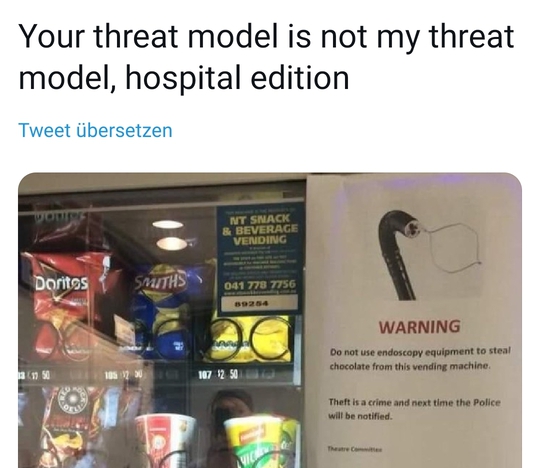Threat Modeling
als Präsentation ▻Für verschiedene Situationen gibt es verschiedene Threat Models (wikipedia), wie in diesem tweet von Nik gezeigt:

Die Gefahr, dass der Snack-Automat mit Endoskopie-Geräten attackiert wird, ist wohl nur in einem Krankenhaus gegeben, nicht aber in einer Schule oder einem Büro.
Zuerst betrachten wir zwei Schritte aus der Definition von Threat Modeling der OWASP:
▻Assessment Scope
Assessment Scope - The first step is always to understand what’s on the line. Identifying tangible assets, like databases of information or sensitive files is usually easy. Understanding the capabilities provided by the application and valuing them is more difficult. Less concrete things, such as reputation and goodwill are the most difficult to measure, but are often the most critical.
Ein Beispiel als Diagram:
Identify Threat Agents and Possible Attacks
Identify Threat Agents and Possible Attacks - A key part of the threat model is a characterization of the different groups of people who might be able to attack your application. These groups should include insiders and outsiders, performing both inadvertent mistakes and malicious attacks.
Hier kann man ein Attack Tree einsetzen:
Weitere Quellen
- Beispiele aus dem OWASP Threat Model Cookbook
- Bruce Schneier: Attack Tree
- Wikipedia Threat Model

